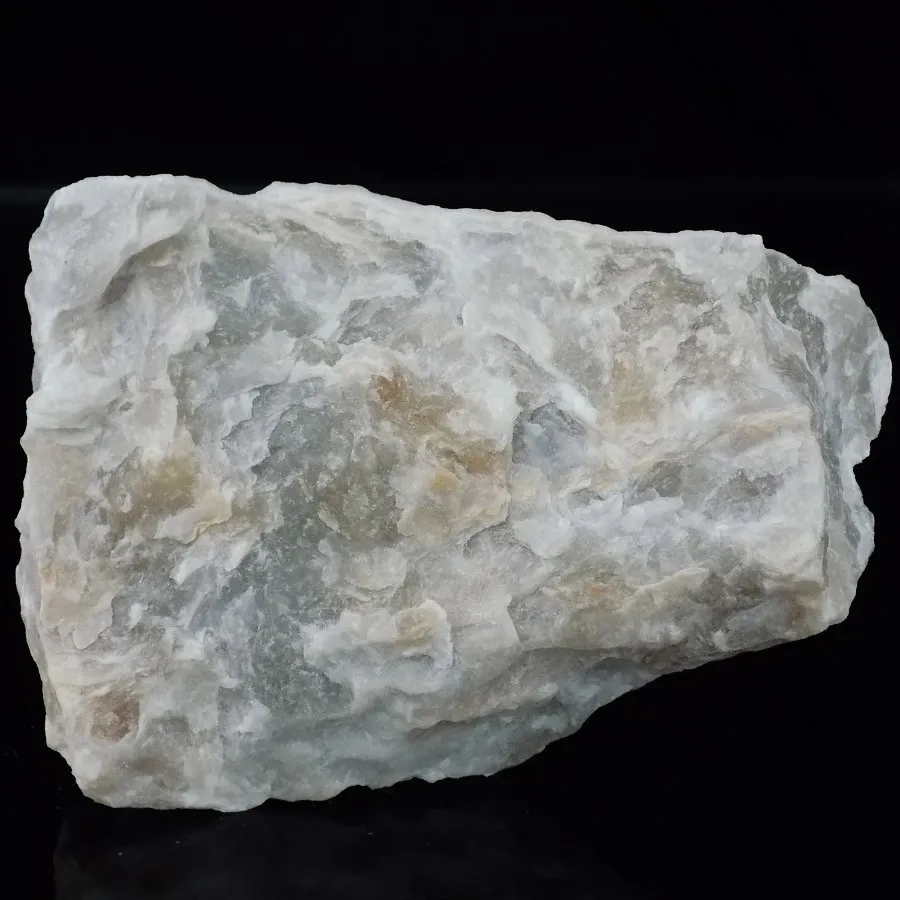
Appearance
Usually, the orthorhombic crystal system is where anhydrite crystallizes. It crystallizes into bladed, prismatic, or tabular shapes. Additionally, it may show up in large, fibrous, or granular clumps. Anhydrite is typically colorless or white, however depending on the impurities in the mineral, it can show blue, gray, or brown hues. Anhydrite’s luster can range from vitreous to pearly, depending on the particular crystal shape and surface quality.
Geographical Distribution
Anhydrite deposits are found all over the world, usually in sedimentary basins with the right combination of geological and environmental factors to support the production of anhydrite. These deposits frequently coexist with other evaporite minerals such as halite and gypsum. Anhydrite deposits are frequently found in a number of prominent locations and nations, including North America, Europe, Asia, the Middle East, Africa, Australia, South America, Canada, and Mexico.
History
Anhydrite, for example, was originally identified in 1794 at a salt mine close to Hall in Tirol. It is most commonly found in evaporite deposits with gypsum. In this instance, depth is crucial because anhydrite has been converted to gypsum closer to the surface by the absorption of flowing groundwater.
Chemical Composition
The chemical formula for anhydrite, a calcium sulfate mineral, is CaSO4. The atoms of calcium (Ca), sulfur (S), and oxygen (O) make up anhydrite. Since anhydrite is an anhydrous mineral, its crystal structure is devoid of water molecules. On the other hand, gypsum (CaSO4·2H2O) has two water molecules in it.

Uses
Because of its unique characteristics, anhydrite has a wide range of significant industrial and commercial applications. The following are some of the main functions and uses of anhydrite:
- Construction Industry:
Portland cement is made with anhydrite as a raw ingredient. In order to regulate the setting time and enhance the end product’s strength and durability, it is frequently added to the clinker during the cement making process. Anhydrite aids in controlling the cement’s hydration reactions, which results in the creation of durable concrete.
- Agriculture:
Anhydrite can be used in agriculture to replenish sulfur and calcium deficient soils. It functions as a soil conditioner to raise the availability of nutrients and soil structure, both of which can promote crop growth.
- Industrial Applications:
Desiccant: Anhydrite is employed as a desiccant (drying agent) in many industrial processes, including the drying of chemicals and solvents, air conditioning systems and natural gas processing.
- Oil and Gas Industry:
Drilling Fluids: Drilling fluids for oil and gas wells can contain anhydrite. It assists in regulating the drilling mud’s rheological characteristics, averting wellbore instability, and maintaining well integrity.
- Pharmaceuticals:
Pharmaceutical Manufacturing: Anhydrite is a filler or excipient used in several pharmaceutical formulations for the manufacturing of tablets and capsules.
- Decorative Stones:
Ornamental Use: Although it is less common than other minerals, anhydrite is occasionally cut and polished for use as an ornamental stone in jewelry and other decorative objects.
Table





